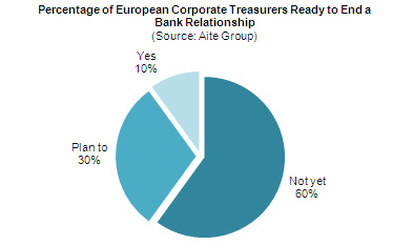 Transaction banking suffers from banks’ lack of a uniform definition of these products and services., according to a new report by Transaction Baking Academy tutor Enrico Camerinelli for the Aite Group. Transaction banking—the set of instruments and services that a bank offers to trading partners to financially support trade, monetary flows, or commercial papers—tracks financial instruments through their entire lifecycle. In a stressed economy, this makes transaction banking a safe source of bank revenue. Today, market transformation is shaping new scenarios for transaction banking. Subject to external factors tied to changes in corporate treasury policies, regulatory pressures, and technological advancement, a bank’s transaction banking business is likely to morph over time, says the report. “Although the majority of the analyzed European banks declare transaction banking to be a significant portion of their business, banks strongly suspect that it is more marketing hype than real business strategy,” says Camerinelli. “For many of those banks, the positive financial results that transaction banking units provide are completely nonexistent.” The full report reviews the transaction banking offerings of top European banks, identifies common denominators and strategies among them, and suggests a taxonomy for banks looking to clearly brand their transaction banking services. This report also discusses how specific market dynamics and business initiatives are likely to affect the different units of a bank’s transaction banking business and how banks should prepare for such significant changes.
0 Comments
|
Sign up to receive our newsletter
Make sure you hear the news about new courses and other developments in transaction banking by signing up for our newsletter
Categories
All
News & ResourcesWe welcome submissions from educational and commercial organisations, subject to our content guidelines. You can get a monthly update straight to your inbox by signing up below. Archives
July 2018
|
Transaction Banking Academy is a trading name of Adaugeo Media Ltd. © Adaugeo Media Ltd 2020.
Administrative contact: [email protected]
Privacy Policy (GDPR)
Administrative contact: [email protected]
Privacy Policy (GDPR)
 RSS Feed
RSS Feed
